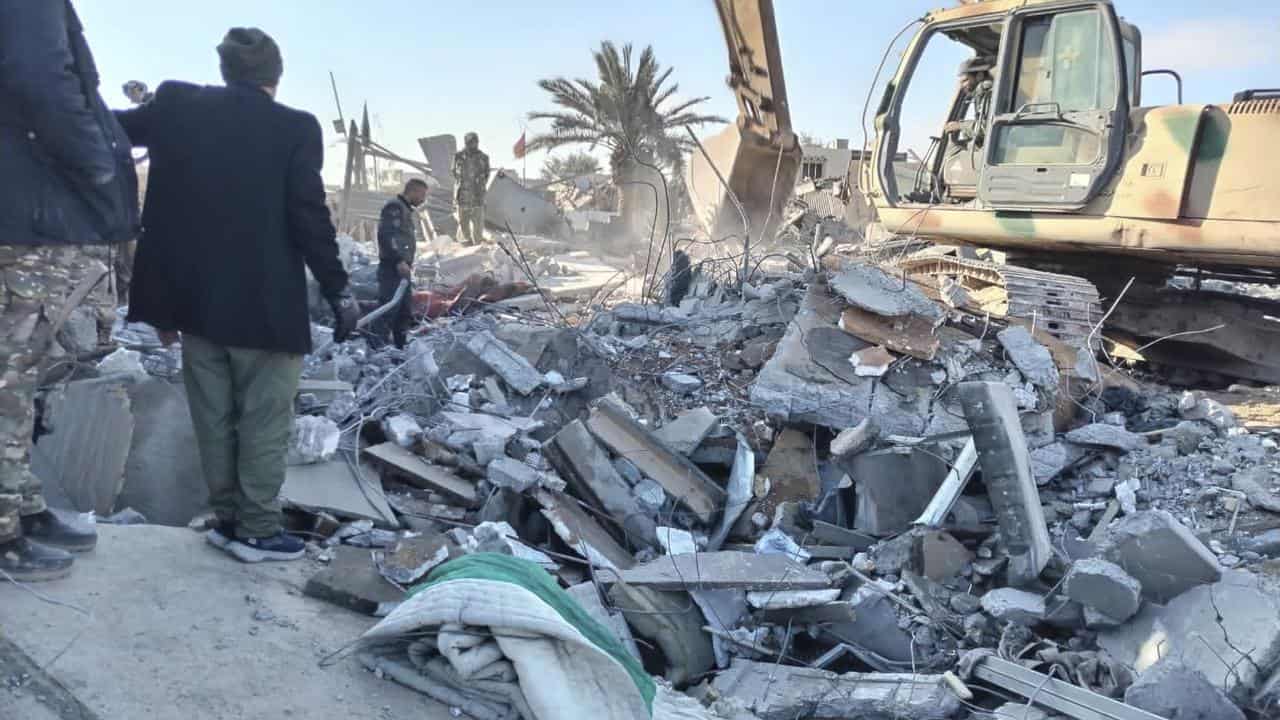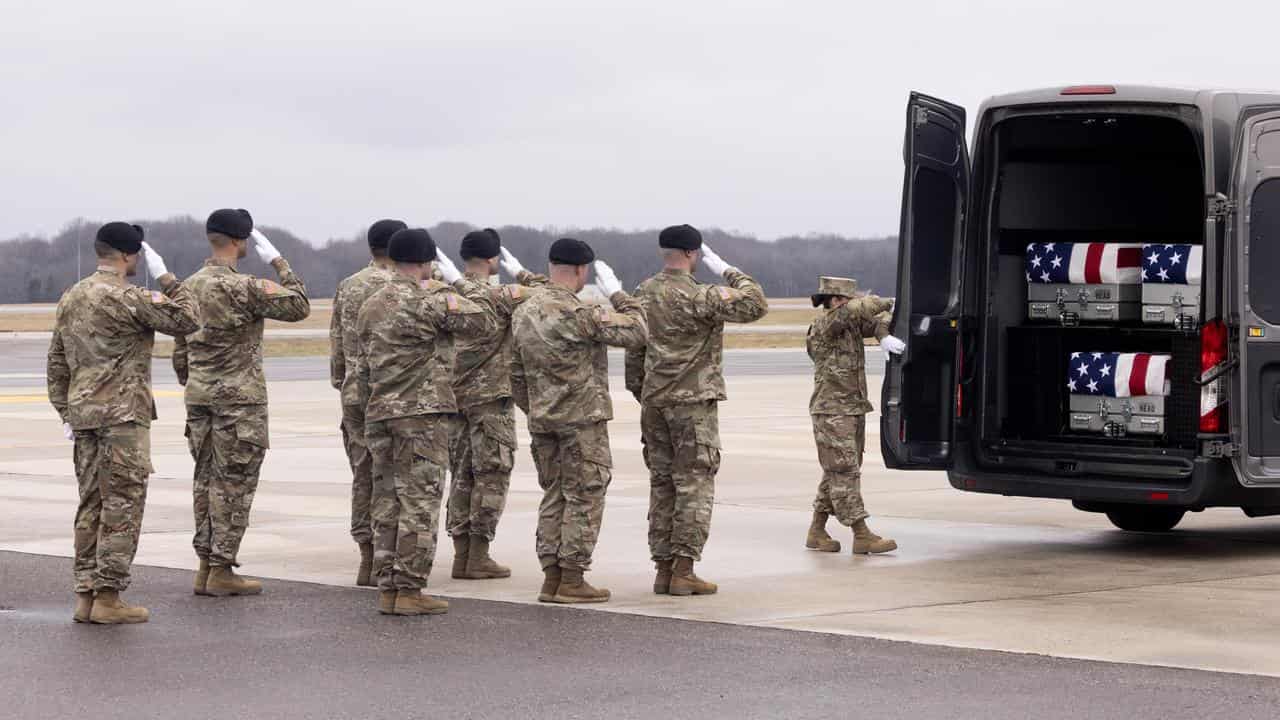
The United States has launched air strikes in Iraq and Syria against more than 85 targets linked to Iran's Revolutionary Guard (IRGC) and militias it backs, reportedly killing nearly 40 people, in retaliation for a deadly attack on US troops.
The strikes, which included the use of long-range B-1 bombers flown from the United States, were the first in response to the attack last weekend in Jordan by Iran-backed militants, and more US military operations are expected in the coming days.
The strikes intensified a conflict that has spread into the region since war erupted between Israel and Hamas after the militant Palestinian group's deadly assault on Israel on October 7.

Iran's foreign ministry spokesperson Nasser Kanaani said in a statement the attacks represented "another adventurous and strategic mistake by the United States that will result only in increased tension and instability".
Iraq summoned the US charge d'affaires in Baghdad to deliver a formal protest.
"Iraq reiterated its refusal that its lands be an arena for settling scores or showing force between warring countries," the Iraqi foreign ministry said in a statement.
Iraq's Popular Mobilization Forces, a state security force including Iran-backed groups, said 16 of its members were killed including fighters and medics. The government earlier said civilians were among 16 dead.
In Syria, the strikes killed 23 people who had been guarding the targeted locations, said Rami Abdulrahman, director of the Syrian Observatory for Human Rights, which reports on war in Syria.
US Lieutenant General Douglas Sims, the director of the Joint Staff, said the attacks appeared to be successful, triggering large secondary explosions as the bombs hit militant weaponry. He said the strikes were undertaken knowing that there would likely be casualties among those in the facilities.
Despite the strikes, the Pentagon has said it does not want war with Iran and does not believe Tehran wants war either, even as Republican pressure has increased on US President Joe Biden to deal a blow directly.

Iran, which backs Hamas, has sought to stay out of the regional conflict itself even as it backs groups that have entered the fray from Lebanon, Yemen, Iraq and Syria - the so-called "Axis of Resistance" that is hostile to Israel and US interests.
US Defense Secretary Lloyd Austin said after the strikes that Biden had directed additional action against the IRGC and those linked to it.
"We do not seek conflict in the Middle East or anywhere else, but the president and I will not tolerate attacks on American forces," Austin said.
An Iraqi government statement said the areas bombed by US aircraft included places where Iraqi security forces are stationed near civilian locations. It said 23 people had been wounded in addition to the 16 killed.
On Friday, Iran's President Ebrahim Raisi said his country will not start a war, but it will "respond strongly" to anyone who bullies it. He did not mention the US strikes in a speech on Saturday marking Iran's space technology day.
Hamas said Washington was pouring "oil on the fire".
The strikes hit targets including command and control centres, rockets, missiles and drone storage facilities, as well as logistics and munition supply chain facilities, the US military said.
In Iraq, residents said several strikes hit the Sikak Neighborhood in Al-Qaim, a residential area that locals said was also used by armed groups to store large amounts of weapons. Militants had left the area and gone into hiding in the days since the Jordan attack, local sources said.
US troops have been attacked over 160 times in Iraq, Syria and Jordan since October 7, usually with a mix of rockets and one-way attack drones, prompting the United States to mount several retaliatory attacks even before the latest strikes.
The United States has assessed that the drone that killed the three soldiers and wounded more than 40 other people in Jordan was made by Iran, US officials have told Reuters.
"Our response began today. It will continue at times and places of our choosing," Biden said.









